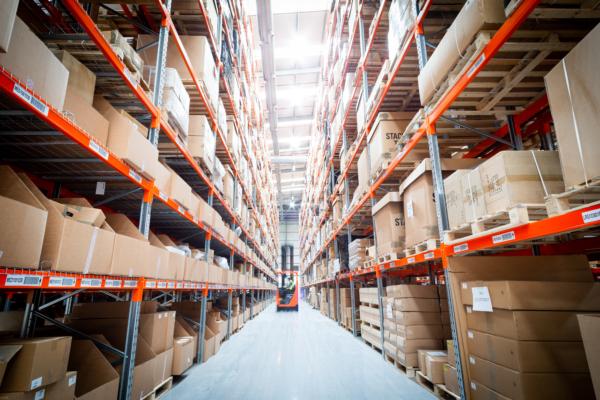As businesses strive to serve the evolving demands of dynamic global markets, supply chains are under constant pressure to not only meet, but to exceed customers’ expectations, building resilient solutions cost-effectively alongside striving towards sustainability goals. Achieving this balance is not an easy feat!
In this series of blogs, Adam Jones, Director of Business Development & Sector Strategies, is exploring how these supply chain pressures are affecting businesses across all sectors from automotive, to consumer goods, retail, eCommerce, and tech, starting with how you can build a cost-effective, resilient supply chain solution.
Pressures on the supply chain
Businesses are operating globally, with both suppliers and customers positioned across the map. It is this distance between customers and suppliers that makes supply chains extremely sensitive to disruption. This could be an extreme weather event, geo-political instability, a humanitarian crisis, or any other distressing occurrence happening in the world. Regardless of whether this global event is taking place en route of a global shipment, the effects are likely to be felt, resulting in a domino effect of issues. Production and order delays result in customer dissatisfaction and loss of customer loyalty, directly and indirectly resulting in increased costs and loss of revenue.
To counteract the sensitivity of the supply chain, many businesses, particularly OEMs and businesses serving time-critical products, have increased their inventory holdings due to improved part and product availability. This increases costs in an attempt to avoid customer dissatisfaction, but evidence suggests this hasn’t worked for many, with OEMs still struggling with extreme lead times, line stoppages and increasingly impatient customers (Trax, 2023).
So, for those who are seeing success, what have they done to support building resilient solutions cost-effectively?
Those that have seen marked improvements are the companies leveraging their data to make more intelligent decisions about where and when to increase stock holdings across their network. Among companies surveyed by Harvard Business Review, data and AI leaders outperformed their peers across a range of key business metrics, including operational efficiency, revenues and customer loyalty (Harvard Business Review, 2023). This investment in data analytics, AI and forecasting tools is working, but achieving ROI can still be a challenge.
These tools are likely to be accurate against a defined set of assumptions; however, customers’ expectations are ever-changing and continuous innovation is required to stay on top of this challenge.
How 3PLs can support
Third-party logistics providers (3PLs) are mining the data at their fingertips to unlock insights and use it to their customers’ advantage. Two critical tools include demand forecasting and end-to-end supply chain visibility of performance and parts. With knowledge of what parts you’ll need and where they are today, businesses can not only begin the process of building resilient solutions cost-effectively, but can also take control of their supply chain to drive efficiency.
Within the automotive industry, 3PLs have used rich supply chain data to develop predictive analytics. Predictive demand forecasting has led to enhanced inventory optimisation tools, enabling supply chain leaders to make more intelligent investments in inventory, reduce lead times and reach the holy grail of ‘right parts in the right place at the right time’. These tools, first designed for the automotive sector, are finding applications across sectors.
Logistics providers have invested heavily in proprietary systems and best-in-class SaaS to unlock end-to-end supply chain visibility. These tools enable supply chain leaders to interrogate the location of their inventory across their supply chain whilst in storage and in transit.
These tools, combined with market intelligence, result in the powerful ability to execute contingency plans before the issues are felt by the end customer. For example, if a sea container containing an urgent part is delayed, analysts could interrogate whether the part is arriving on an alternative shipment, or in local facilities for a stock transfer. In a worst-case scenario, expedited shipments may be triggered from the supplier, but decisions are made with confidence that there wasn’t a more sustainable or cheaper option.
Key Risks & Mitigation
Applying the latest supply chain technologies to your operations can appear expensive, so many businesses ignore the opportunities in front of them. Of course, businesses should challenge the cost of services, but many have under invested in their supply chains, and without a big upgrade, the costs of failure will spiral. Challenge potential supply chain partners to demonstrate the benefits of their technologies and find one who will tailor, their solutions to meet your particular needs and bring true value.
Read next
Read Adam’s second blog in this series about supporting your supply chain pressures all about how you can go above and beyond to meet and exceed the ever-changing needs of your consumers.
